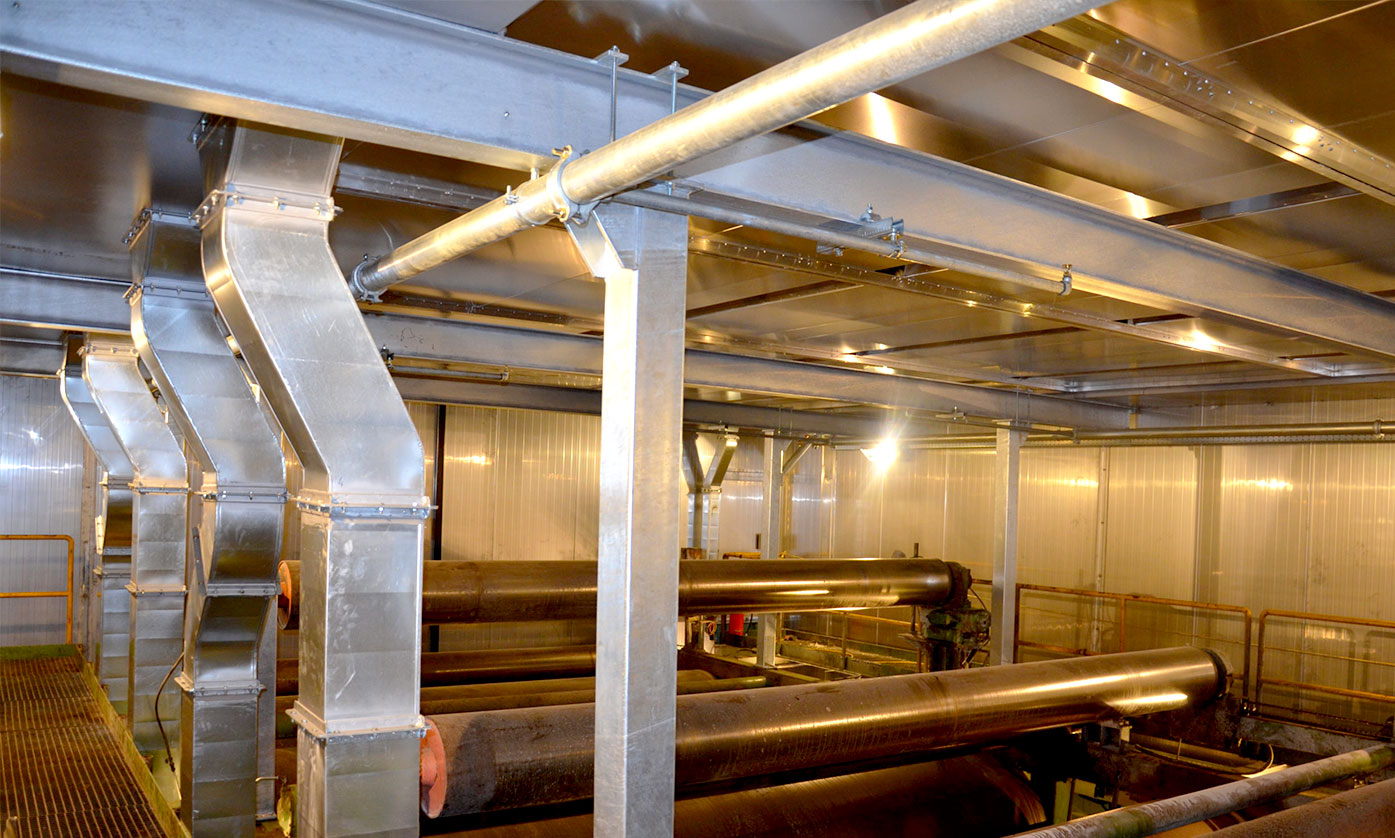THE PRODUCTION CAN BENEFIT GREATLY FROM AN ENCLOSED HOOD SYSTEM
One of the cornerstones of the energy efficiency of our enclosed hood solution is the engineering of the hood’s false ceiling.

One of the cornerstones of the energy efficiency of our enclosed hood solution is the engineering of the hood’s false ceiling.

Roof elements are superior thick and high-density insulation has the capacity to perform at a high dew point, it is easy to mount and remove with a crane, and can be easily cleaned.
Apart from the above, our false ceiling concept also has another important advantage. As the exhaust air is collected into the false ceiling of the hood through adjustable openings, the amount of the exhaust air can be optimized by adjusting the openings across and along the paper direction. This effectively optimizes the amount of exhaust air in each individual point along the production line. And this directly translates into less air and energy used.
What is more, the false ceiling traps the exhaust air and delivers it to the heat recovery system. And as the exhaust air has high humidity due to the high dew point enabled by our tight construction and high insulation, the heat recovery can be that much more efficient. More energy saved, and more unnecessary costs avoided!
The surprising consequence of a superior enclosed hood system is the fact that the production itself can benefit greatly. Proper ventilation, which neutralises the possibility of condensation in air pockets, heat bridges and uneven air flow and humidity, will effectively increase the quality of the paper and board: there will be greater uniformity of grammage, humidity and density. And most importantly, the web edge air issues related over-drying can be avoided altogether.
There will also be beneficial consequences for the production line itself. The well-managed humidity and airflow conditions will allow for the production line to run at higher speeds with fewer paper breaks. However, in the case of a necessary maintenance intervention, our hoods come equipped with innovative systems which allow for easy access and fast servicing of the production line. And when the roof needs to be cleaned or maintained, it can be easily dismantled and mounted back. In other words: fewer and shorter downtimes.